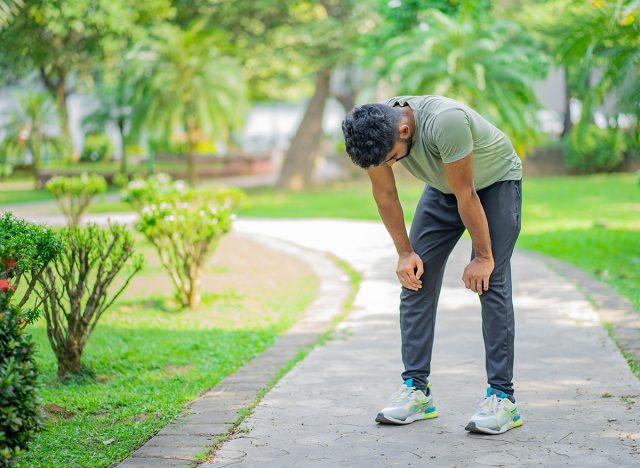What Happens to Your Body If You Don't Walk Enough

Walking is something you can't run from: It's simply a part of the day. The Center for Disease Control recommends 10,000 steps a day. This may sound like a huge number, but realistically the human body was designed to do almost twice that amount. Here is what happens to your body if you don't get the recommended steps.
Walking Helps Turn on Your Metabolism

As a society, we have created a world of convenience, minimizing the steps in the day, all for more time to sit and relax. Interestingly, walking produces so many benefits inside of the body. When you walk, you kick on the energy centers, producing more energy for the day. This helps to turn on the metabolism, which helps to burn more calories, and keeps the circulation moving throughout the body, which strengthens the heart.
Related: 12 Ways to Lose Weight Simply by Walking
If You Don't Walk Enough, Your Body Won't Produce Enough Energy

If we were to stop or minimize our steps, the body would become more sluggish and lazier, less energy would be produced. The heart would become weaker, and calories would be stored. 10,000 steps a day is equivalent to 5 miles. Research states that the average American only takes 3,000-4,000 steps per day, and that's just not enough.
The Human Body Was Designed to Move

The human body was designed to move, we were designed as hunter gatherers. All of this work took place on foot, not by car. Life has become incredibly convenient, leaving fewer options to take more steps. In reality, it's all a mindset.
There Are Ways to Sneak Steps In

You can park further away and view the parking situation in two ways. First, frustration: The car is too far, the day is too long, and the body is too tired. Or, second: It's a fantastic opportunity to burn a few calories, kick on the metabolism, and recharge one's energy. We all get stuck in our mindset. Looking at the second option will help the body gain energy, health, and overall well being.
Walking Helps Improve Your Health In a Variety of Ways

From walking alone, the body has the ability of controlling blood sugar, blood pressure, weight, and heart health. Just like with any form of exercise, the goal is to continue to challenge the body. Walk a bit faster or create intervals of slow and fast, and yes, this also applies to box store shopping. Any opportunity you can place in your day to walk a few steps makes counting steps the easiest part of your day.
Related: Here Is What Happens to Your Body If You Don't Lift Weights
Focus On How Walking Makes You Feel

Instead of viewing walking as a chore, focus on the energy you receive and how your body feels throughout the day. When we can focus on the positive feelings, it becomes easier to create more moments to walk, the steps add up, and the body becomes healthier. Not to mention, how walking helps diffuse stress.
💪🔥Body Booster: Sneak steps in throughout the day. Instead of parking in the spot closest to wherever you are going, park your car a little further away so you can get extra exercise.




